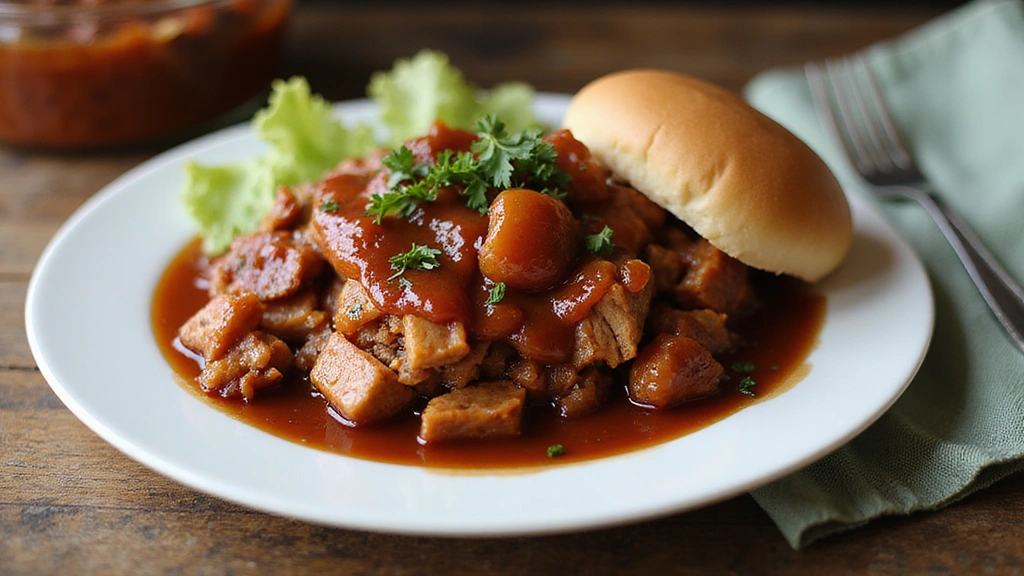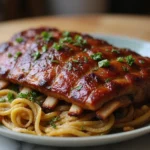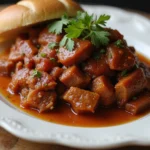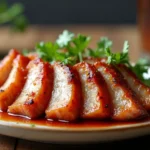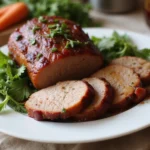Juicy Pulled Pork Crock Pot BBQ with Homemade Barbecue Sauce is a dish that embodies comfort food at its finest.
The tender, slow-cooked pork combined with a rich, tangy barbecue sauce creates an explosion of flavors that’s hard to resist.
I first tasted this dish at a summer barbecue with friends, where the smoky aroma and the sight of pulled pork being piled high on buns made my mouth water.
Whether you’re hosting a backyard gathering or simply looking for an easy weeknight dinner, this recipe is sure to impress and satisfy.
The History and Cultural Significance
• Juicy Pulled Pork Crock Pot BBQ With Homemade Barbecue Sauce traces its origins to the Southern United States, where barbecue traditions date back to Indigenous peoples and early settlers.
• The dish evolved over decades as slow cooking methods and regional spice blends emerged, eventually becoming the beloved version we know today.
• In Southern culture, this dish traditionally appears at family gatherings, picnics, and celebrations, symbolizing hospitality and community.
• While many variations exist across different regions, the authentic version maintains its signature low and slow cooking method that sets it apart from imitations.
Recipe Overview
Nutritional Information (per serving)
Ingredients
Essential Equipment Guide
Crock Pot: This slow cooker is essential for achieving the tender, juicy texture of pulled pork. Look for one with a programmable timer and multiple heat settings for better control.
Meat Thermometer: A reliable meat thermometer is crucial for checking the doneness of the pork. A digital version with a quick read feature is ideal for accuracy.
Blender or Food Processor: This tool is important for making the homemade barbecue sauce smooth and well-blended. A high-speed blender works best for achieving the right consistency.
Preparation Methods
Shredding Pork: This technique involves using two forks to pull the cooked pork into bite-sized pieces. It’s important for achieving the signature texture of pulled pork. Ensure the meat is cool enough to handle but still warm, as this helps the fibers separate easily.
Making Barbecue Sauce: This involves combining and blending the sauce ingredients until smooth. This step is crucial for creating a balanced flavor profile. Taste the sauce after blending and adjust seasonings as needed.
Layering Flavors: This technique refers to adding ingredients gradually to build depth in the sauce. Start with the base ingredients, then taste and adjust with spices and sweetness until the flavor is just right.
Step 1: Prepare Ingredients
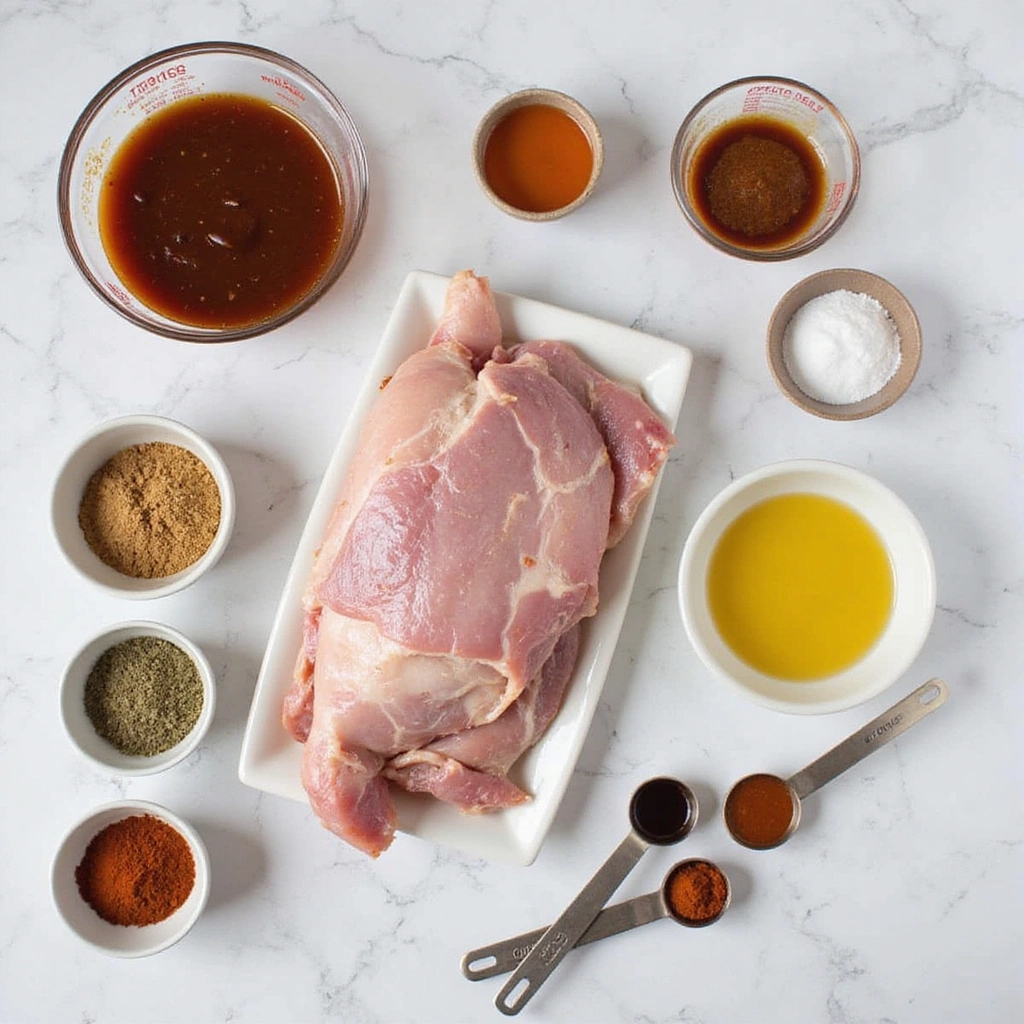
Begin by gathering all your ingredients to streamline the cooking process.
Trim any excess fat from the pork shoulder to ensure even cooking and better flavor absorption.
Have your chicken broth ready, as it will help keep the meat moist during cooking.
Measuring all ingredients ahead of time can make the cooking process smoother.
Step 2: Season the Pork
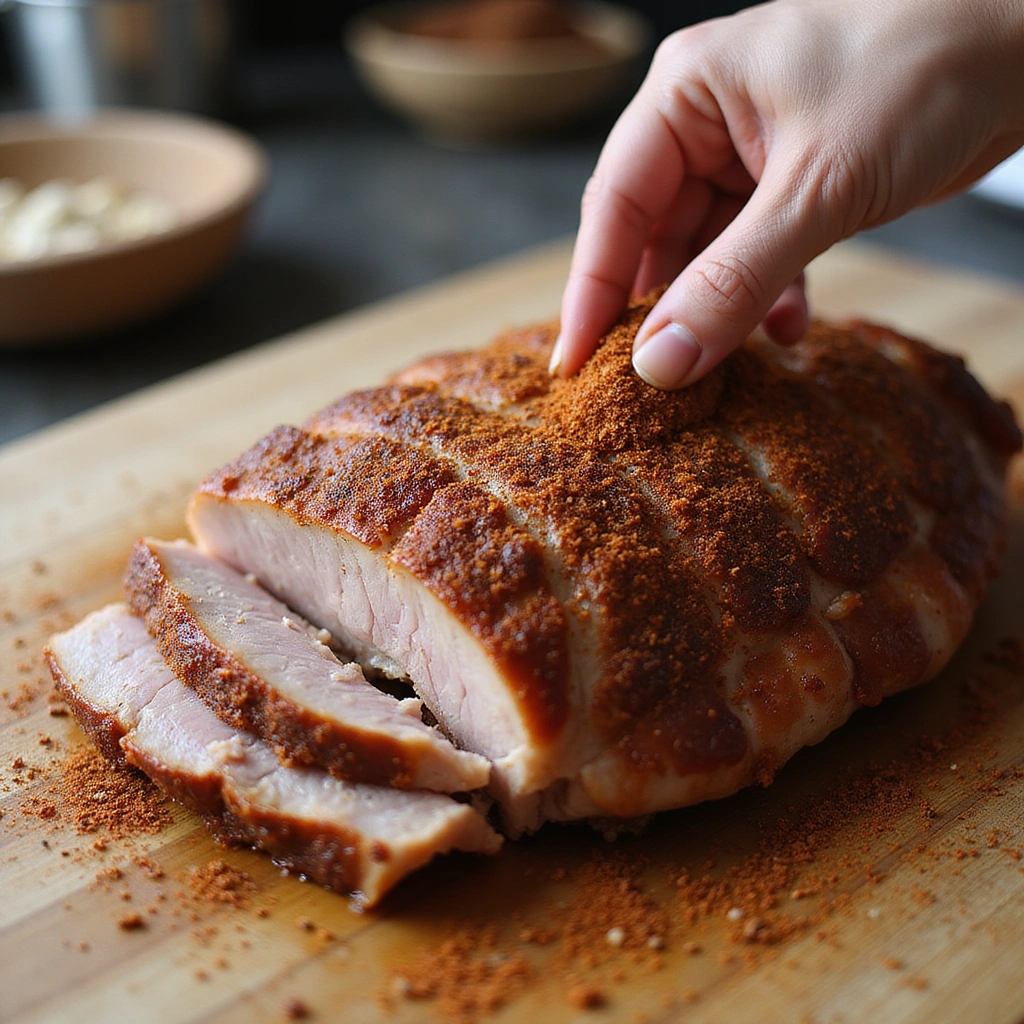
Sprinkle salt, black pepper, and cayenne pepper evenly over the pork shoulder.
Rub the seasonings into the meat to ensure every bite is flavorful.
Make sure to coat all sides of the pork for an even taste.
This step is crucial for developing the initial flavor base before cooking.
Step 3: Prepare the Sauce
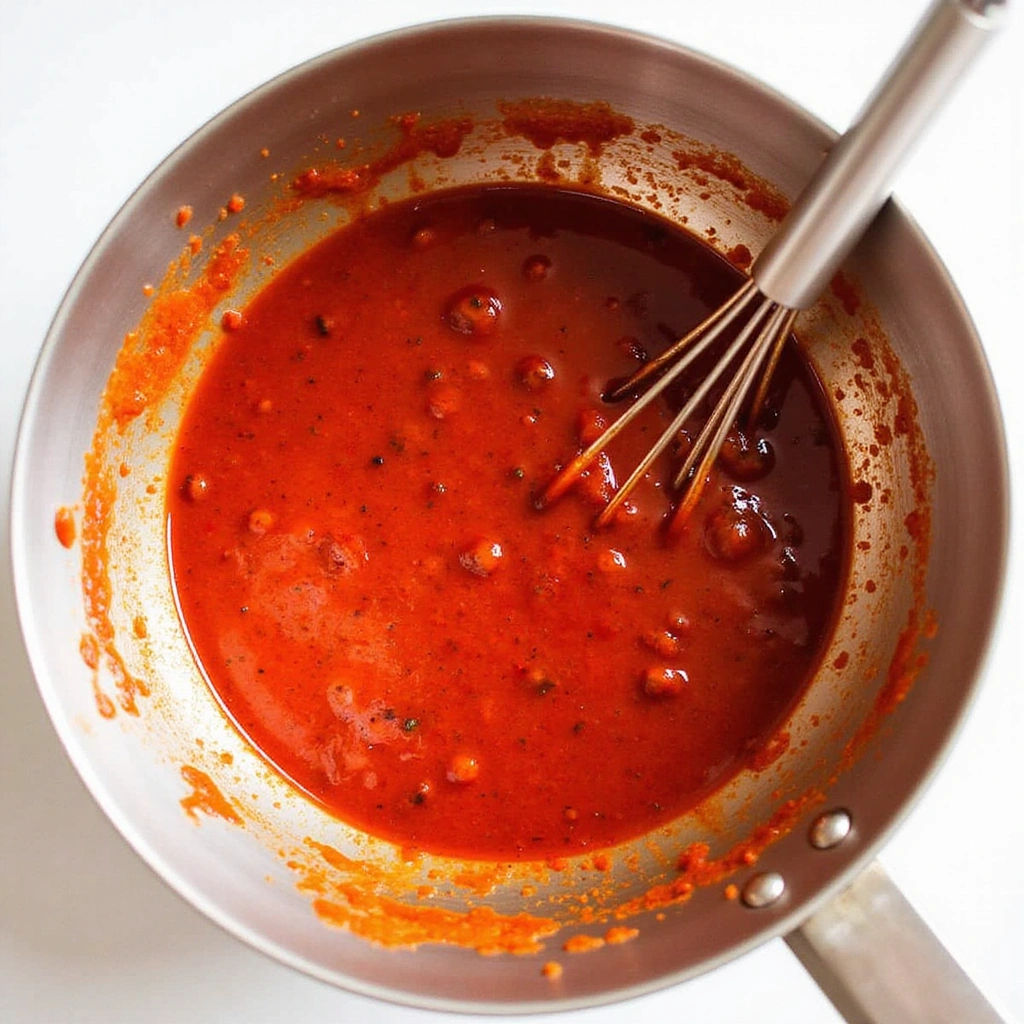
In a bowl, combine ketchup, apple cider vinegar, brown sugar, Worcestershire sauce, smoked paprika, garlic powder, onion powder, salt, and black pepper.
Mix well until all ingredients are fully blended and the sauce is smooth.
Taste the sauce and adjust seasoning if necessary, adding more vinegar for tang or sugar for sweetness.
This sauce will enhance the pulled pork and should be well-balanced.
Step 4: Place Pork in the Crock Pot
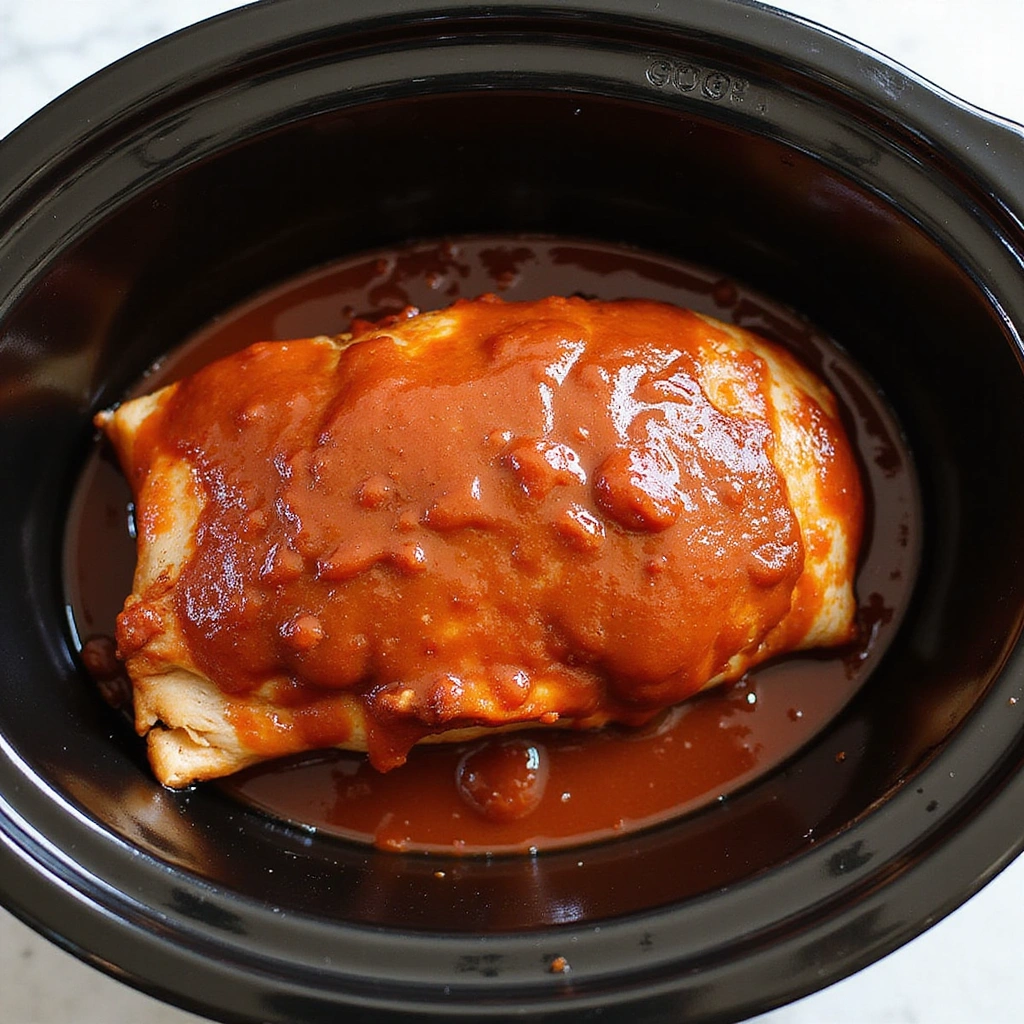
Transfer the seasoned pork shoulder into the crock pot.
Pour the prepared sauce over the pork, ensuring it’s well-coated.
Add the chicken broth around the sides of the pork for added moisture during cooking.
This setup will help the pork cook evenly and absorb the flavor of the sauce.
Step 5: Set the Crock Pot
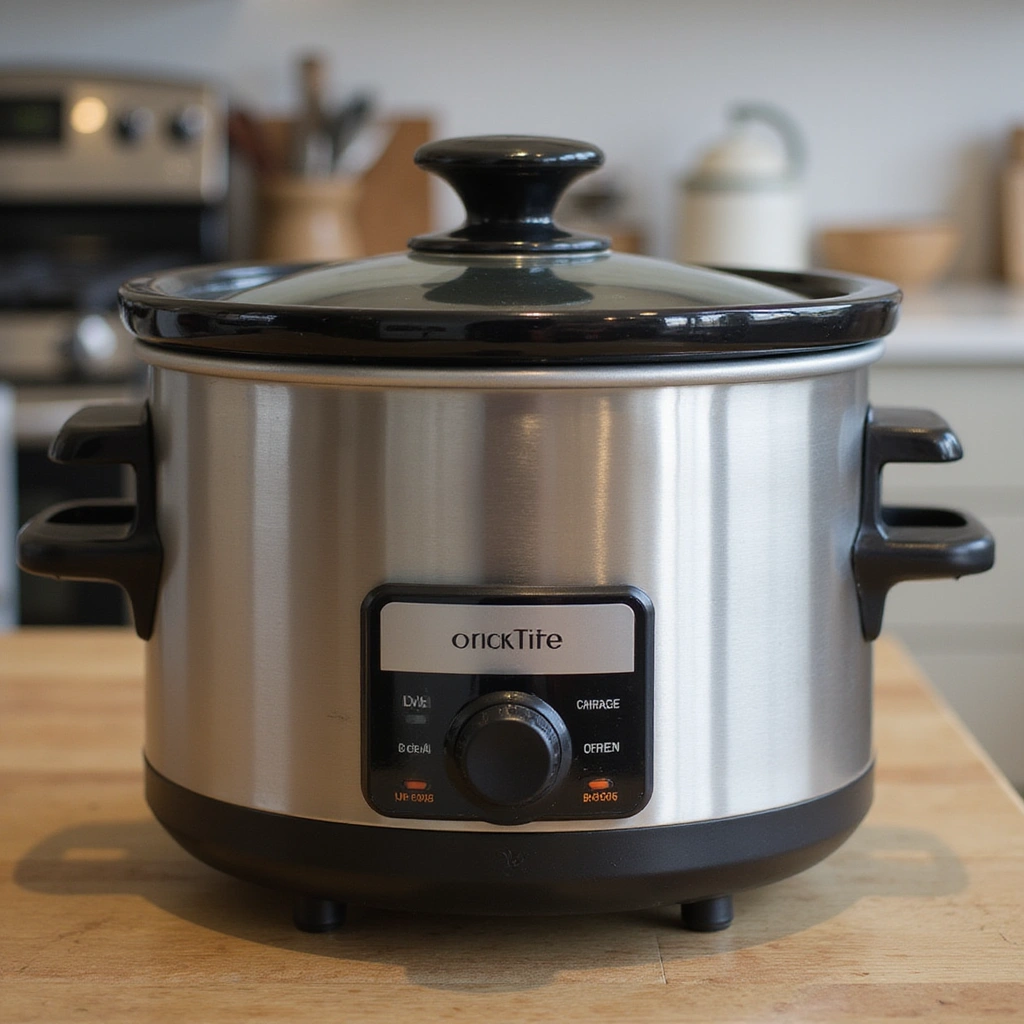
Cover the crock pot with its lid and set it to low heat.
Cook for 8 hours, allowing the flavors to develop and the pork to become tender.
If you’re short on time, you can set it to high for 4-5 hours, but low is preferred for best results.
The long cooking time is essential for breaking down the meat fibers.
Step 6: Shred the Pork
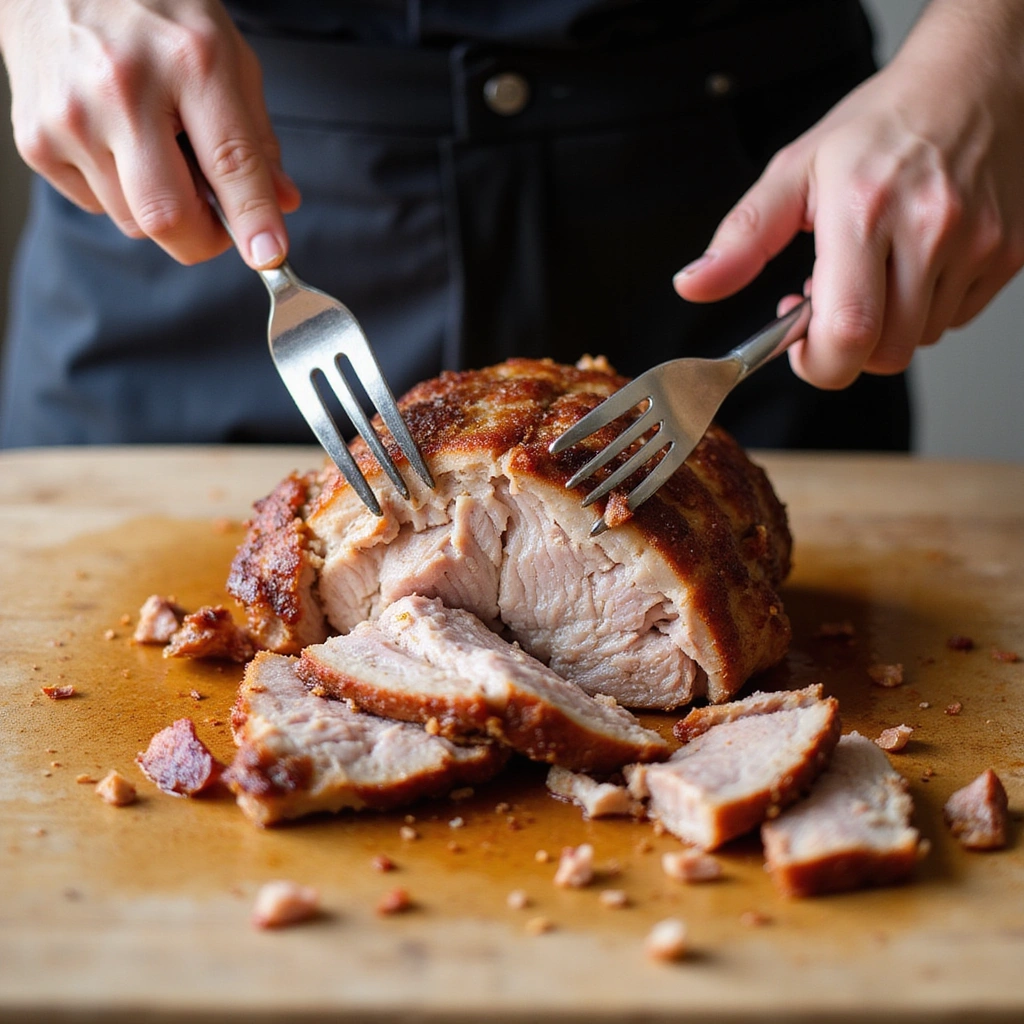
Once the cooking time is complete, carefully remove the pork from the crock pot using tongs.
Let it cool slightly before shredding with two forks until it reaches a pulled texture.
Make sure to discard any large chunks of fat that may remain.
This step is crucial for achieving the classic ‘pulled’ look and texture.
Step 7: Mix with Sauce
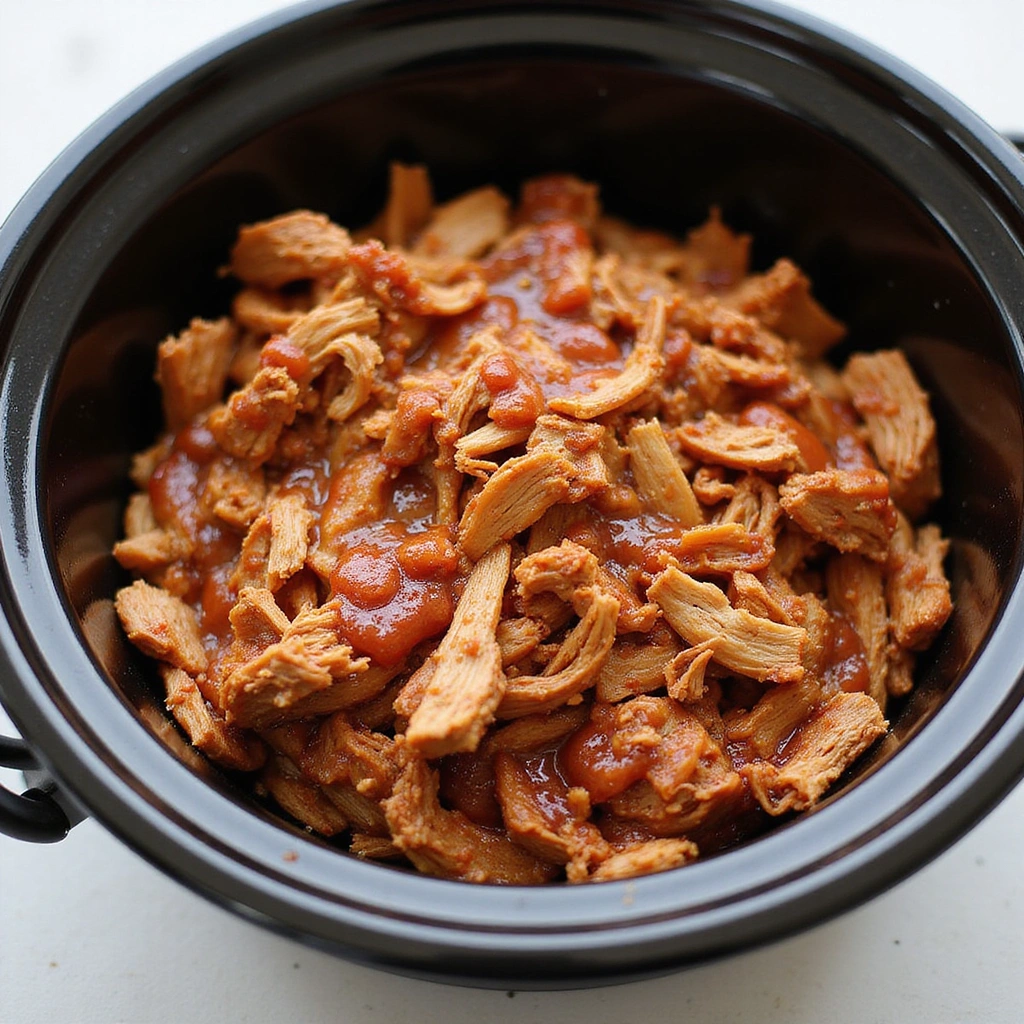
Place the shredded pork back into the crock pot and mix it thoroughly with the remaining barbecue sauce.
Ensure that all pieces are well coated for maximum flavor.
Allow it to cook for an additional 15-30 minutes on low heat to warm through.
This final mix ensures the pork is infused with delicious barbecue flavor.
Step 8: Serve
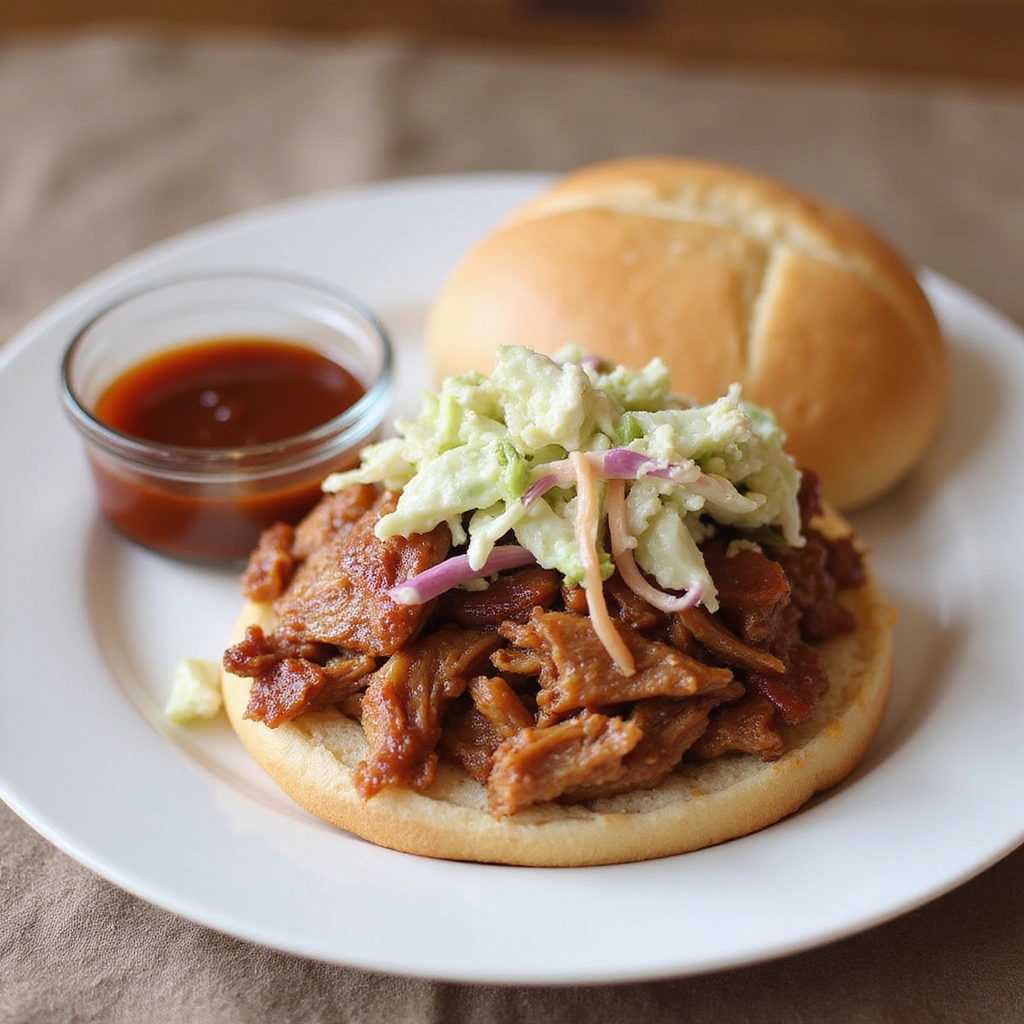
Serve the pulled pork on soft buns or over rice, as desired.
Top with coleslaw or pickles for added crunch and flavor.
Provide extra sauce on the side for those who like it saucy.
This dish is perfect for gatherings, and everyone can customize their plates.
Critical Timing and Temperature Guide
Cooking Time: Cook the pork on low for 8 hours or high for 4-5 hours. The meat should be tender enough to shred with minimal resistance. Avoid lifting the lid too often to maintain temperature.
Shredding: Allow the meat to rest for 10-15 minutes before shredding. This helps retain moisture and makes the meat easier to handle. Look for meat that pulls apart easily with a fork.
Serving Temperature: The ideal serving temperature for pulled pork is between 140°F and 165°F. Use a meat thermometer to ensure doneness and safety.
Pro Tips for Juicy Pulled Pork Crock Pot Bbq With Homemade Barbecue Sauce
• Ingredient Selection: Choose a well-marbled pork shoulder for the best flavor and tenderness. The fat content helps keep the meat juicy during the long cooking process.
• Preparation Secret: Consider brining the pork overnight in a salt-water solution for added moisture and flavor.
• Temperature Management: Ensure the pork is at room temperature before cooking to promote even cooking throughout.
• Texture Enhancement: Let the shredded pork rest after shredding to allow juices to redistribute before mixing with the sauce.
• Flavor Layering: Experiment with different types of vinegar in the sauce to find your preferred balance of acidity.
• Make-Ahead Strategies: You can prepare the sauce in advance and refrigerate it. This allows the flavors to meld together.
• Restaurant-Quality Finishing Touches: Garnish with fresh herbs like parsley or cilantro for a pop of color and freshness.
• Equipment Optimization: Use a programmable crock pot that allows you to set cooking times and automatically switch to warm after cooking.
Troubleshooting Common Issues
• Meat Too Dry: This issue often arises from overcooking. Ensure you monitor cooking times closely and use enough liquid in the crock pot. If it happens, you can add additional barbecue sauce or broth when serving.
• Flavor Too Bland: If the flavor is lacking, consider adding more seasoning to the sauce or using a marinade prior to cooking. Adjusting the vinegar or sugar can enhance the overall taste.
• Pork Not Shredding Easily: If the meat isn’t shredding well, it may need more cooking time. Return it to the crock pot and cook longer until tender.
• Too Much Fat: To avoid excess fat, trim the pork shoulder well before cooking. If fat does render out, you can skim it off the top of the sauce before serving.
• Sauce Too Runny: If the sauce is too watery, let it simmer uncovered for a bit to thicken. Alternatively, you can mix a bit of cornstarch with water and add it to the sauce while cooking.
Variations and Regional Differences
• Carolina Pulled Pork: This version features a vinegar-based sauce, often with a mustard component, which is tangy and less sweet than traditional barbecue sauce.
• Texas-Style Pulled Pork: A richer, smokier version using a dry rub with plenty of spices, focusing more on the meat’s natural flavor and less on sauce.
• Asian-Inspired Pulled Pork: Incorporates flavors like soy sauce, ginger, and sesame oil for a unique twist that pairs well with rice or in bao buns.
• Modern Interpretations: Incorporating local craft beers or different types of sweeteners like maple syrup can yield exciting and contemporary variations.
Food Science Behind the Recipe
• Collagen Breakdown: The slow cooking process allows collagen in the pork to break down into gelatin, creating a tender texture that melts in your mouth. This is essential for pulled pork as it enhances moisture.
• Flavor Development: Cooking at low temperatures allows for the Maillard reaction to occur, where proteins and sugars react under heat, producing complex flavors in the meat and sauce.
• Emulsification: The combination of fat and liquid in the sauce creates an emulsion that helps coat the pork, leading to a rich mouthfeel and balanced flavors.
Frequently Asked Questions
What’s the most common mistake people make when preparing Juicy Pulled Pork? The most common mistake is overcooking the meat, leading to dryness. Always monitor the cooking time and use a meat thermometer for best results.
Can I prepare components of this dish in advance? Yes, you can prepare the sauce up to a week in advance and store it in the refrigerator. The pork can also be seasoned and refrigerated the night before cooking.
How do I adapt this recipe for dietary restrictions? For gluten-free needs, ensure your sauces and broth are gluten-free. You can also use a leaner cut of pork if you’re watching fat intake.
What’s the best way to store and reheat leftovers? Store leftovers in an airtight container in the refrigerator for up to 4 days. Reheat in the microwave or on the stovetop, adding a splash of broth or water to retain moisture.
Can I freeze this dish? Yes, pulled pork freezes well. Store it in an airtight container for up to 3 months. Thaw in the refrigerator overnight before reheating.
What wine or beverages pair best with this dish? A dry red wine like Zinfandel or a crisp lager pairs nicely with the smoky flavors of the pulled pork.
How can I scale this recipe up for a crowd? To scale up, simply multiply the ingredients, but consider using two crock pots for even cooking if making a large batch.
What side dishes complement this recipe best? Coleslaw, baked beans, and cornbread are classic sides that balance the richness of the pulled pork.
How do professional chefs elevate this dish for restaurant service? Professional chefs might use house-made pickles or artisanal buns, and they often present the dish with artistic plating and garnishes.
Serving and Presentation Guide
• Traditional Presentation: Serve the pulled pork on soft white or whole wheat buns, garnished with coleslaw and dill pickles. Use a wooden board for a rustic touch.
• Modern Plating Ideas: Create a deconstructed plate with pulled pork on one side, a small bowl of sauce, and a mound of coleslaw artfully arranged.
• Accompaniment Suggestions: Serve with sweet potato fries or cornbread for a well-rounded meal.
• Special Occasion Presentation: For gatherings, serve in a large, decorative bowl with a ladle for self-serving, ensuring a warm and inviting atmosphere.
Conclusion
Juicy Pulled Pork Crock Pot BBQ with Homemade Barbecue Sauce is a recipe that brings people together.
It’s simple to make yet incredibly flavorful, making it a perfect choice for any occasion.
I hope you enjoy creating this delicious dish as much as I do!

